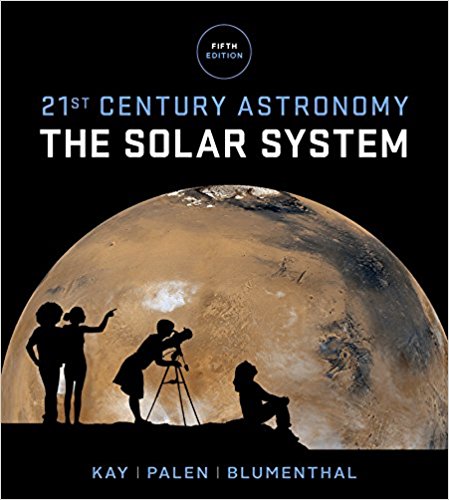Test Bank For 21st Century Astronomy The Solar System Fifth Edition By Kay -Palen
Digital item No Waiting Time Instant Download
In Stock
Original price was: $85.00.$50.00Current price is: $50.00.
Test Bank For 21st Century Astronomy The Solar System Fifth Edition By Kay -Palen
Chapter 2: Patterns in the Sky—Motions of Earth and the Moon
Learning Objectives
Define the bold-faced vocabulary terms within the chapter.
Multiple Choice: 1, 3, 4, 5, 6, 10, 26, 44, 50, 64, 69
Short Answer: 16, 22
2.1 Earth Spins on Its Axis
Identify the locations of the north celestial pole, south celestial pole, celestial equator, zenith, meridian, and horizon on the celestial sphere.
Multiple Choice: 2, 8, 14
Short Answer: 3, 4
Show the path that a star follows on the sky, from the time it rises until it sets.
Multiple Choice: 9, 15, 16
Short Answer: 1
Illustrate how the motion and visibility of stars change with the one’s location on Earth.
Multiple Choice: 33, 34
Short Answer: 2, 5, 7
Demonstrate how knowledge of the sky permits one to know latitude and direction on Earth.
Multiple Choice: 7, 11, 12, 13
Short Answer: 6
Illustrate how one event will look in two different frames of reference.
Short Answer: 8
2.2 Revolution around the Sun Leads to Changes during the Year
Identify the path of the ecliptic, the solstices, and the equinoxes on the celestial sphere.
Multiple Choice: 17, 19
Short Answer: 10, 11, 12, 15
Relate Earth’s position around the Sun to the zodiacal constellations we observe in the night-time sky.
Multiple Choice: 18, 36, 37, 38, 39, 40, 41
Explain why Earth’s axial tilt causes seasons.
Multiple Choice: 20, 21, 24, 25, 29, 30, 31, 35, 42
Short Answer: 9, 13
Illustrate how the height of the Sun and the length of a day vary with the season and your latitude.
Multiple Choice: 22, 23, 27, 28, 32
Short Answer: 14
2.3 The Moon’s Appearance Changes as It Orbits Earth
Define the phases of the moon.
Multiple Choice: 45
Short Answer: 18
Explain what causes us to observe moon phases.
Multiple Choice: 47, 48, 49, 52
Short Answer: 17, 20
Illustrate the Sun-Moon-Earth geometry needed to produce each Moon phase.
Multiple Choice: 43, 46, 51, 53, 54
Short Answer: 19, 21
2.4 Calendars Are Based on the Day, Month, and Year
Compare and contrast solar and lunar calendars.
Multiple Choice: 58
Short Answer: 23, 24
Illustrate the need for our current pattern of leap years.
Multiple Choice: 55, 56, 57
2.5 Eclipses Result from the Alignment of Earth, Moon, and the Sun
Illustrate the Sun-Moon-Earth geometries needed to produce solar and lunar eclipses.
Multiple Choice: 59, 60, 61, 62, 68, 70
Short Answer: 25, 26, 28
Relate the geometry of solar and lunar eclipses to their visibility across Earth.
Multiple Choice: 63, 65, 66, 67
Short Answer: 27, 29
Working It Out 2.1
Use proportional reasoning to estimate a characteristic of the whole based on measurement of a part.
Short Answer: 30
MULTIPLE CHOICE
- There are _________ constellations in the entire sky.
- 12
- 13
- 88
- hundreds of
- thousands of
ANS: C DIF: Easy REF: Section 2.1
MSC: Remembering
OBJ: Define the bold-faced vocabulary terms within the chapter.
- What defines the location of the equator on Earth?
- the axis around which Earth rotates
- where the ground is the warmest
- the tilt of Earth’s rotational axis relative to its orbit around the Sun
- the orbit of Earth around the Sun
- all of the above
ANS: A DIF: Easy REF: Section 2.1
MSC: Remembering
OBJ: Identify the locations of the north celestial pole, south celestial pole, celestial equator, zenith, meridian, and horizon on the celestial sphere.
- Circumpolar stars are stars that are
- always below the horizon.
- always on the celestial equator.
- always at the north celestial pole.
- sometimes above the horizon.
- always above the horizon.
ANS: E DIF: Easy REF: Section 2.1
MSC: Remembering
OBJ: Define the bold-faced vocabulary terms within the chapter.
- The point directly below your feet is called the
- meridian.
- celestial pole.
- nadir.
- circumpolar plane.
- zenith.
ANS: C DIF: Medium REF: Section 2.1
MSC: Remembering
OBJ: Define the bold-faced vocabulary terms within the chapter.
- Declination is a measure of a star’s location relative to
- zenith.
- ecliptic.
- nadir.
- celestial equator.
- line of nodes.
ANS: D DIF: Medium REF: Section 2.1
MSC: Remembering


Reviews
There are no reviews yet.